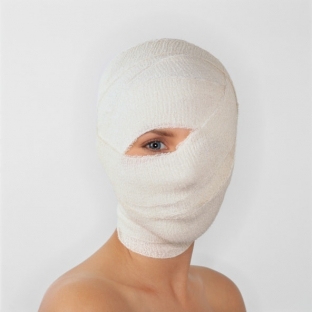Complications of rhinoplasty that appear in the late postoperative period are often the result of illiterate surgical intervention. Late complications of rhinoplasty represent a certain diagnostic difficulty, since the final assessment of the results of rhinoplasty can be carried out no earlier than one year after the operation. Therefore, all complications of the late postoperative period of rhinoplasty are divided into those that appear in the first 6 months after surgery, and those that are detected no earlier than two years after rhinoplasty. In addition, all late complications of rhinoplasty can be divided into three large groups: nasal symmetry disorders, functional disorders and complications resulting from the use of grafts.
Disturbances in the symmetry of the nose in the late postoperative period
Disturbances in the symmetry of the nose in the late postoperative period are most often due to the disproportion of the surgical technique performed and the presence of "dead" noses. spaces resulting in excessive scarring of tissues. The appearance of a supratip elevation after rhinoplasty is due to contraction and prolonged swelling in the area of the nasal tip. Ledges or "bosses" are also one of the most common problems of the tip of the nose, breaking its symmetry. The formation of protrusions is associated with an unrevealed asymmetry of the lower lateral cartilages or with excessive excision of the lateral crura, enhanced by scar tissue deformation. Open Roof Syndrome another frequent complication of the late postoperative period after rhinoplasty,
Functional disorders occurring in the late postoperative periodFunctional disorders that occur as a complication of the late postoperative period after rhinoplasty are most often manifested by difficulty in nasal breathing. This condition is caused by the following anatomical defects that occur after rhinoplasty:
- excessive narrowing of the bony vault;
- incomplete elimination of deviation or curvature of the caudal nasal septum;
- divergence or flattening of the base of the medial crura;
- columella too wide;
- unresolved turbinate hypertrophy;
- excessive narrowing of the upper lateral cartilages;
- weakness or excessive excision and narrowing of the bases of the wings of the nose;
- loss of support and age-related ptosis of the nasal tip;
- concavity of the lateral crura.

Complications of the late postoperative period after rhinoplasty as a result of the use of grafts directly depend on what type of graft was transplanted to the patient. Specific complications of the use of cartilage grafts are their incorrect position, displacement, twisting, the presence of visible irregularities and the appearance of contours, resorption, soft tissue deformation, and the development of an infectious process. Bone grafts can lead to rhinoplasty complications such as graft resorption, scalp seroma or hematoma, development of alopecia and scarring in the donor areas, and intracranial complications can rarely occur. The main disadvantage of fascial grafts is the possibility that the transplanted fascia may become thinner in the late postoperative period,
What can help prevent late complications of rhinoplasty







Add a comment